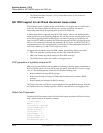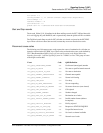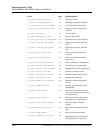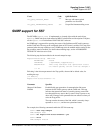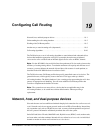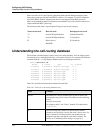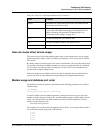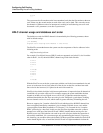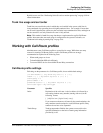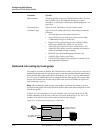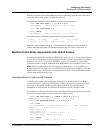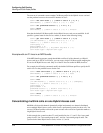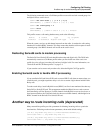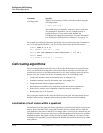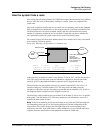
19-4 Preliminary May 9, 2000 APX 8000/MAX TNT/DSLTNT Physical Interface Configuration Guide
Configuring Call Routing
Understanding the call-routing database
3:1:4
...
The system uses the first modem on the lower-numbered card, then the first modem on the next
card. It then uses the second modem on each of the cards, and so forth. This sort order causes
the channels of different cards to be interspersed, resulting in load balancing across all cards
that match a call’s parameters, even after a system reset.
HDLC channel usage and database sort order
The default sort order for HDLC channels is determined by the following parameter, shown
with its default settings:
[in SYSTEM]
digital-call-routing-sort-method = slot-first
The Slot-First sort method means the system sorts the components of device addresses in the
following order:
shelf:slot:item:logical item
For example, if two Hybrid Access (HDLC) cards are supported, one in shelf 1, slot 14 and the
other in shelf 1, slot 16, the initial HDLC channel usage order looks like this:
1:14:1
1:14:2
1:14:3
...
1:14:96
1:16:1
1:16:2
1:16:3
...
1:16:96
With the Slot-First sort order, the system starts with the card in the lowest-numbered slot, and
moves on to the next slot card only when all of the devices on the first card have been used.
Once a device has been used, it is placed at the end of the sorted list.
Slot-First is the default for digital calls because performance is improved when all channels of
a multilink call are on the same card. For example, suppose the system establishes the base
channel of an MP+ call on a Hybrid Access card in slot 4. When the connection requires
additional bandwidth, the Slot-First sort order gives the TAOS unit a good chance of adding
the new channels on slot 4 as well, which results in greater efficiency in handling the call.
However, suppose slot 3 contains a Series56 II card (which provides 48 HDLC channels but
does not support Frame Relay connections), slot 4 contains a Hybrid Access card, and the
system supports Frame Relay datalinks on T1. Because T1 is a network device, it requires
HDLC processing by a host card. In this case, the Slot-First algorithm causes the system to
attempt to use each one of the Series56 II card’s HDLC channels before moving on to the
Hybrid Access card. This behavior can result in up to 48 call rejects before the connection is
successfully established. (No system messages are reported during the interval.) To prevent
this situation, you can either remove the default Call-Route profile that enables the Series56 II
card to handle digital calls, or install the Series56 II card in a higher-numbered slot than the



